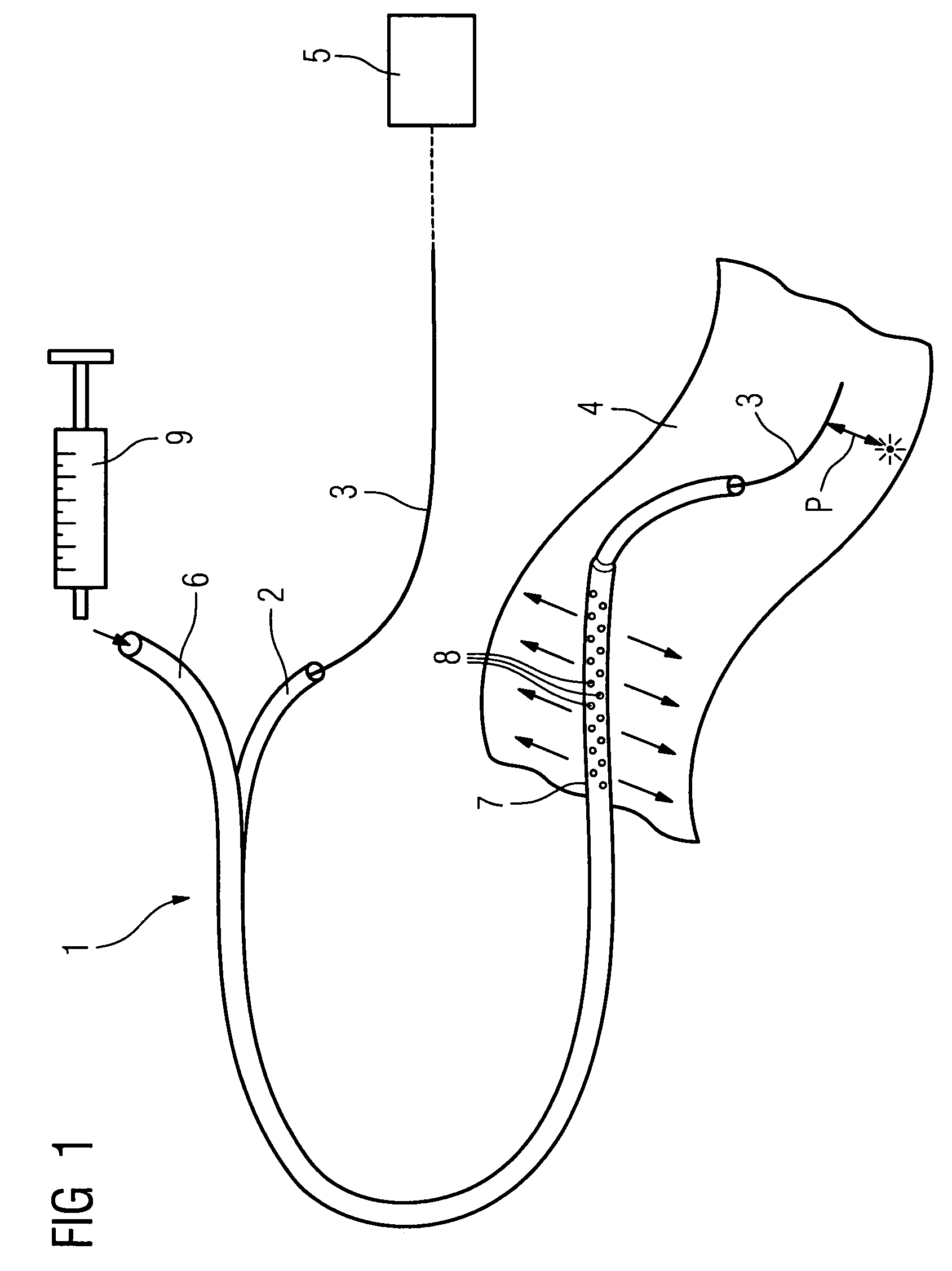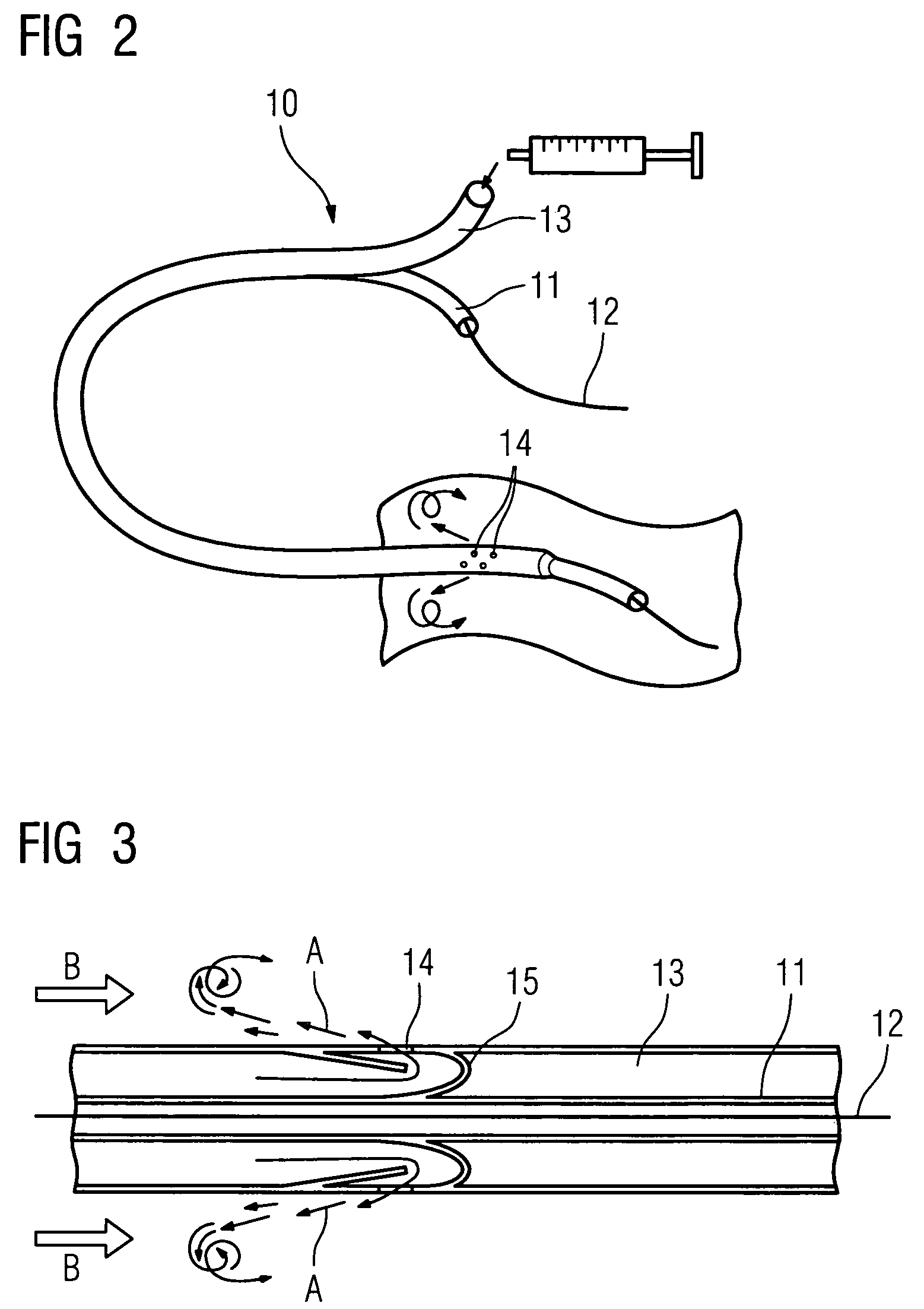Method of recording two-dimensional images of a perfused blood vessel
a two-dimensional image and perfusion technology, applied in the field of two-dimensional images of perfused blood vessels, can solve the problems of affecting the quality of blood flow, the risk of tearing of the inner vascular wall, and the interruption of the incoming or outgoing blood supply for the duration of the investigation, so as to achieve a large mixing area and sufficient quantity
- Summary
- Abstract
- Description
- Claims
- Application Information
AI Technical Summary
Benefits of technology
Problems solved by technology
Method used
Image
Examples
Embodiment Construction
[0023]FIG. 1 shows a catheter 1 according to the invention, comprising a first lumen 2, in which the movement of an imaging device 3 in the form of a wire with an integrated optical fiber (not shown in greater detail) is guided for the purpose of recording images from a vessel in an optical coherence tomography procedure. This image recording unit 3, i.e. the wire, protrudes out of the front, open end of the lumen 2, as shown in FIG. 1. In this area there is a window via which light delivered via the optical fiber (not shown in greater detail) is radiated onto the tissue of the vessel 4, which is illustrated here as being opened out for the sake of clarity, and via which light reflected from the vascular wall is coupled back into the optical fiber and carried to the exterior, where it is supplied to a control and processing unit 5 (shown here in exemplary form only) in order to generate the coherence tomography images. The light emission and coupling of the reflected light is illust...
PUM
| Property | Measurement | Unit |
|---|---|---|
| angle | aaaaa | aaaaa |
| refractive index | aaaaa | aaaaa |
| refractive index | aaaaa | aaaaa |
Abstract
Description
Claims
Application Information
 Login to View More
Login to View More - R&D
- Intellectual Property
- Life Sciences
- Materials
- Tech Scout
- Unparalleled Data Quality
- Higher Quality Content
- 60% Fewer Hallucinations
Browse by: Latest US Patents, China's latest patents, Technical Efficacy Thesaurus, Application Domain, Technology Topic, Popular Technical Reports.
© 2025 PatSnap. All rights reserved.Legal|Privacy policy|Modern Slavery Act Transparency Statement|Sitemap|About US| Contact US: help@patsnap.com



